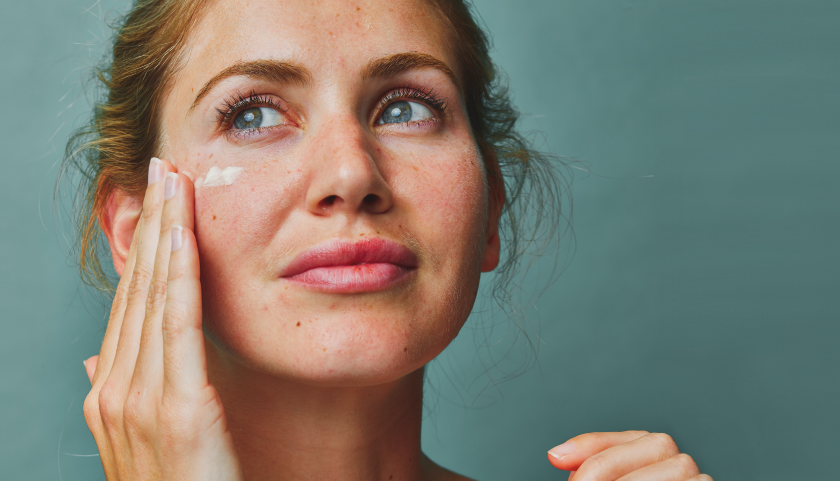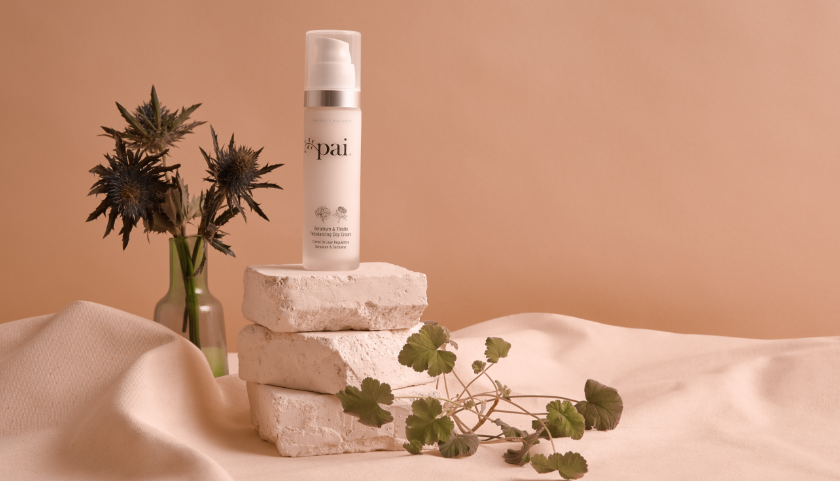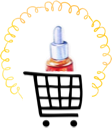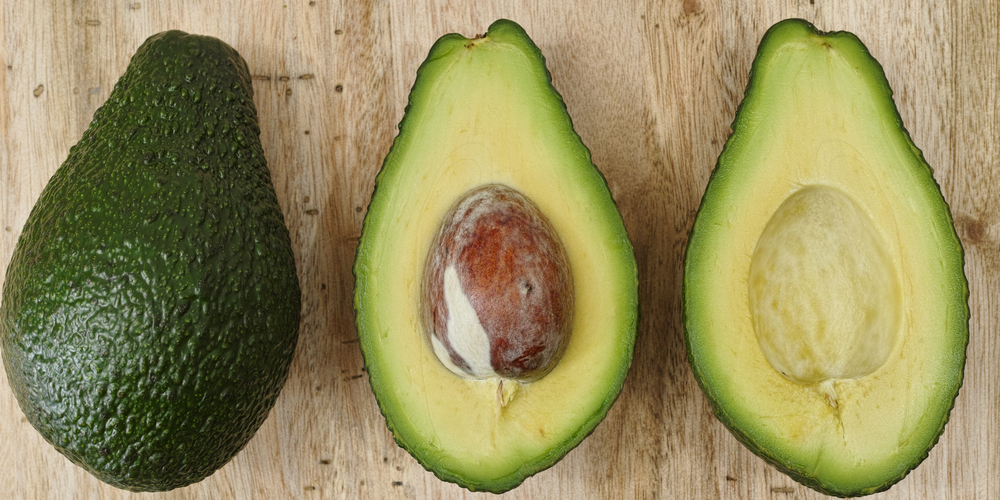I was once asked why nutrition is the preferable method for treating acne.
“Well…is it?” I thought to myself.
As a Registered Dietitian, treating acne therapeutically with food wasn’t part of my degree training. I’d consequently been sceptical about the evidence behind any media hype.
But I was also well aware acne has a major impact on people’s self-esteem. So if diet could help, I wanted to know.
What causes acne?
For the majority of us, acne resolves in late teens to early twenties, but it can persist for longer and also develop for the first time in people during their late twenties and thirties.
The exact cause is unknown, but Dermatologists believe factors such as hormones, weight, genetics, inflammation and emotional stress play a role.
The British Association for Dermatologists describe the oil-producing glands of people with acne as being particularly sensitive to normal blood levels of key hormones. This causes glands to produce excess oil.
Skin cells lining the pores may also not shed properly, causing follicles to block. This combined oily and blocked pore environment causes the acne bacteria (which live on everyone’s skin), to multiply.

Diet-acne – going back in history
In the late 1800s and early 1900s, scientists speculated there was a link between diet and acne. Processed fatty foods, chocolate, bananas, nuts, alcohol, sugar and cheese were all to blame.
But then in the 1960s, two highly cited studies seemed to prove there was no such link. So much so, that textbooks were revised and dermatologists took the view that any murmurings about diet and acne were unscientific.
But we now know these studies contained major design flaws, leading to an erroneous conclusion which meant there was no research for a further 40 years!
It’s only recently that an association with acne and food has reemerged.
Recent research
A diet-acne link seemed to resurface in 2002 when scientists reported that acne was almost non-existent in outside Western populations.
From their observations, they concluded that the vast differences in the incidence of acne between non-Western populations and modern societies could not be solely down to genes.
Something environmental must be at play – perhaps diet they thought. These Non-Western individuals ate diets predominantly rich in plant-based, unprocessed low glycemic load foods. A list of which can be seen below.

Table credit: Cordain et al, 2002
If diet does play a role in promoting acne, it’s thought to be due to the ability of some foods to stimulate complex acne-promoting pathways.
The strongest association to date is thought by scientists to be between dairy and glycemic load (GL).
Diet and acne – what you can do
Glycemic Load
The glycemic index (GI) is a number given to a food to reflect its effect on a person’s blood sugar. High GI foods include sugar breakfast cereals, white flour, biscuits and sweets.
The GL is based on the portion sizes we eat, so is a practical extension of GI science to our daily lives.
The theory is that foods with a high GL are rapidly digested and absorbed, causing a rise in blood glucose. This sends a message to the pancreas causing an acute rise in insulin along with other hormones.
GL and acne research
Overall, this seems to be a controversial area with conflicting evidence between studies.
In a recent study, 248 males and females living in New York were asked to fill out a validated food frequency questionnaire and report their acne severity. Results showed that participants with moderate to severe acne had a significantly higher GL diet and added sugar consumption.
Randomised controlled trials (the gold standard study design) have also been conducted.
Several of these studies have demonstrated improvements in: acne, hormone levels and sebum production following a low GL diet (here, here and here), whilst another hasn’t. In short, more research is needed!
Diet and dairy
There is another theory that milk may aggravate acne development by increasing concentrations of insulin and a hormone called IGF-1 in the blood. Since milk contains carbohydrates, it leads to a rise in blood sugar and insulin, similar to the effects of a high GL diet.
Interestingly, milk has a 3-6 fold higher GL than expected. The addition of just a small amount of milk to a low-GI meal increases the insulin response to levels characteristic of a high-GI meal. This accounts for skimmed milk and whole milk but not for cheese.
Milk may also contribute to acne because of its hormone content which includes IGF-1. This, if drunk in high quantities, has been shown to increase IGF-1 levels in the blood.
Dairy and acne research
Two large studies provide the most convincing evidence to support a link between milk and acne (here and here).
In both cases they asked the participants to note down what they ate and followed them for three years. In both studies, high milk intake increased risk of acne by about 20%.
Another trial found that acne was positively associated with frequent milk consumption, but not whole milk or cheese.
The problem is that literature investigating milk and acne is observational. There are no randomised controlled trials looking into a dairy-acne link.
This means we can’t conclusively prove that milk causes acne, but we can suggest drinking milk may increase the risk.
Since milk contains over 60 different molecules, it’s extremely difficult to tease apart which of these components might be having an acne promoting effect. Especially when there is such a broad range of dairy products.
Scientists are still trying to discover if it is the hormones, its GL effect or protein in milk that drives any associations.

So if you’re prone to acne, what should you do?
- Book an appointment
See your GP to discuss medical treatments such as topical creams which can be used alongside making any dietary changes. The British Association of Dermatologists discuss treatment options here. - Go non-comedogenic
Consider choosing make-up and face products which are labelled non-comedogenic (free from pore-blocking ingredients). Pai’s geranium and thistle rebalancing day cream would tick this box. - Monitor
Keep a food/symptom diary and look for patterns between foods and breakouts. - Trial cutting dairy
Consider a milk or dairy exclusion period for a couple of months. Make sure you are getting enough calcium by using this British Dietetic Association star guide. Be aware that organic dairy alternatives will not be fortified with calcium. You may need to consider taking a calcium supplement if you are not getting enough.

Go low GL
Consider a low GL diet. This low GL recipe book by Registered Dietitian Nigel Denby is excellent. He explains that a GL rating of <10 = low, 11-19 = medium and 20+ = high. To have a low GL day, you would be aiming for a GL total of 80 or under. A total of 120 or over would be a high GL day.
An example low GL day:
Breakfast: Two poached eggs, one slice of pumpernickel bread, avocado and fresh tomatoes.
Snack: Small handful of almonds
Lunch: Lentils with fresh spinach, grated fennel and goats cheese.
Snack: Two oatcakes with a tablespoon of hummus.
Evening meal: Chicken and quinoa salad with butternut squash, chilli and broccoli
Summary: the link between diet and acne
There is no strong evidence that diet causes acne, but there is emerging evidence it can aggravate it. There are some dietary strategies worth trying alongside medical treatment.
A typical Western diet based on refined high GL carbohydrates and dairy may be accountable.
Eat a healthy varied diet, high in plant-based whole-foods such as fruit, veg, pulses and nuts to see if acne symptoms improve. The exclusion of milk could also be considered, as long as daily calcium levels can be met.
The exclusion of milk could also be considered, as long as daily calcium levels can be met.
Looking into the future, we need research to understand what’s going on before any evidenced-based recommendations can be developed.
Registered Nutritionists, Dietitians and Dermatologists should be open-minded. They should be aware of their potential to make an extremely positive impact on someone’s life by improving their skin with food.
Hopefully we will see more collaboration between both professions in years to come.
Rosie Saunt (Registered Dietitian) @rosie-saunt



